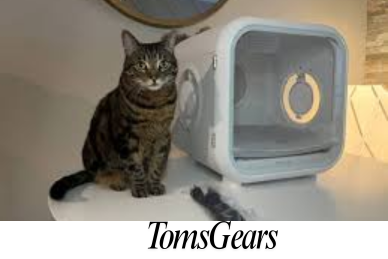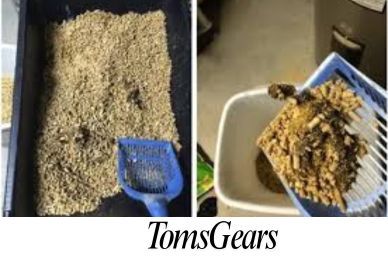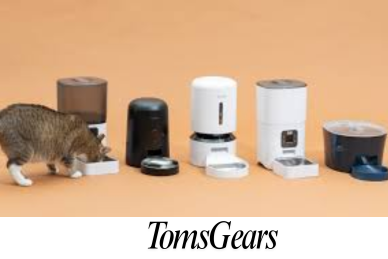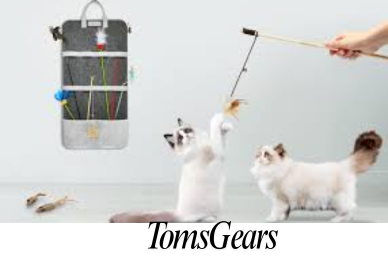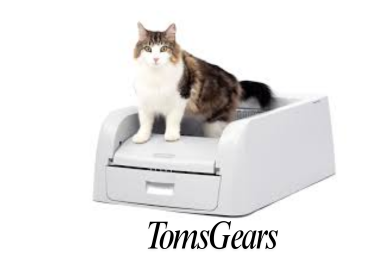How to Stop Your Cat from Stepping in Poop in the Litter Box?
If your cat keeps stepping in its poop, it can become a messy and unpleasant problem. To prevent this, it’s important to address factors such as litter box cleanliness, size, and layout. The solution typically involves adjusting the litter box setup and training your cat to adopt better habits. Below, we explore several effective strategies that can help keep your cat’s paws clean and your home odor-free.
Why Does My Cat Keep Stepping in Poop?
Cats are naturally clean animals, so when a cat steps in its own poop, it’s often a sign of something amiss. Inadequate space, improper litter box placement, or health issues like arthritis can be contributing factors. Smaller or overcrowded litter boxes can make it difficult for your cat to find a clean spot, causing them to accidentally step in their waste. Additionally, if the cat is older or has mobility issues, navigating the litter box can become challenging.
How Big Should the Litter Box Be to Prevent Stepping on Poop?
The size of the litter box is crucial in preventing your cat from stepping in poop. A general rule of thumb is to choose a litter box that’s one-and-a-half times the length of your cat. This allows for ample space to turn around and find a clean area to use. If the box is too small, your cat may inadvertently step in their waste while trying to maneuver inside. Consider switching to a larger litter box if your current one seems cramped.
How Often Should I Clean the Litter Box?
Regular cleaning is vital. A dirty litter box is one of the most common reasons cats step in poop. Scoop out waste at least twice a day to ensure that your cat always has a clean place to go. Additionally, change the litter completely once a week and scrub the box with mild soap to eliminate odors and bacteria. If the box remains unclean, your cat might avoid it or have trouble finding a sanitary spot.
Does the Type of Litter Matter to Prevent the Issue?
Yes, the type of litter can influence your cat’s behavior. Some cats dislike certain textures or odors, which can cause them to rush their bathroom habits, leading to accidents like stepping in their poop. Opt for a clumping litter that makes waste removal easier. Ensure the litter is unscented, as strong fragrances can deter your cat and increase the chances of mishaps. Experimenting with different types of litter may help you find the one your cat prefers.
What Health Issue Can Cause Stepping in Litter Box Poop?
If your cat suddenly starts stepping in poop, health issues could be the underlying cause. Arthritis, obesity, or vision problems can make it difficult for your cat to navigate the litter box properly. If you suspect health problems, a visit to the vet is recommended. A professional evaluation can determine whether your cat’s behavior is due to a medical condition or environmental factors.
How Can I Change My Cat’s Litter Box Behavior?
Training your cat to have better litter box manners is possible with consistency and patience. Start by rewarding positive behavior when your cat successfully uses the litter box without stepping in its poop. Use treats, praise, or a favorite toy to reinforce these habits. Avoid punishment, as it can create anxiety and worsen the situation.
Should I Use a Different Litter Box Design?
Some cats may benefit from a litter box with higher sides or a top entry design, which provides them with more room to move around without accidentally stepping in waste. Another option is to use a litter box with a grated entrance, which can help clean off any litter or waste from your cat’s paws as they exit. Choosing the right design depends on your cat’s size, mobility, and preferences.
Maintaining a clean and odor-free environment around the litter box is essential. Invest in a litter mat to catch any stray litter and clean your cat’s paws as it exits the box. Regularly vacuum the area around the litter box and sanitize the floor. This not only keeps your home cleaner but also minimizes the spread of any residual bacteria or odors.
What Should I Do If My Cat Refuses to Use the Litter Box?
If your cat avoids the litter box entirely or exhibits unusual behavior like urinating outside the box, it’s time to reassess the litter box setup. Cats are particular creatures, and even small changes—such as switching litter brands or moving the box to a quieter location—can make a difference. Ensure that the litter box is placed in a quiet, low-traffic area and that your cat feels safe using it.
FAQs
Can I use multiple litter boxes to prevent my cat from stepping in poop?
Yes, having multiple litter boxes, especially in a multi-cat household, can prevent overcrowding and reduce the chances of accidents.
Is there a specific type of litter box I should use for older cats?
For older cats, consider using a low-entry litter box that’s easier to access. This reduces the need for jumping, making it less likely for them to step in their waste.
Should I consult a vet if my cat’s behavior doesn’t improve?
Absolutely. If your cat continues to step in poop despite changes to the litter box, a vet checkup is recommended to rule out any underlying health issues.
How can I keep my cat’s paws clean after using the litter box?
Use a litter mat and consider gently wiping your cat’s paws with a damp cloth if they get dirty. This keeps the area cleaner and reduces odor.

